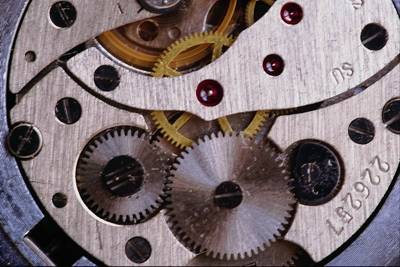
 |
||||||||
relazione sul motoprimo giorno: Siamo andati in giardino e ci siamo divisi in tre gruppi. Ci siamo serviti di quattro coni per creare un percorso diritto e abbiamo posizionato una persona al suo inizio. Questa persona doveva rispettare le indicazioni date dal professore per affrontare il percorso e noi dovevamo cronometrare il tempo che egli ci metteva nell'arrivare ad ogni cono. Tornati in classe abbiamo calcolato la media approsimata ai secondi del percorso compiuto da ognuno facendo anche un grafico cartesiano. Discutendo in classe sono emerse delle considerazioni: ad ogni persona è stato cambiato il tempo di percorrenza, la velocità si può misurare in km/h... secondo giorno: Siamo andati in aula di scienze dove il professore ci ha consegnato un foglio che spiega che cos'è il motion detector (sensore di moto), a cosa serve e come si usa: se gli si posiziona qualsiasi cosa davanti o comunque nel raggio di 15-20° ad una distanza massima di 6m registra sul computer tutti i suoi minimi movimenti perchè dotato di ultrasuoni che invia e riceve riflessi. terzo giorno: In aula di scienze abbiamo fatto qualche esperimento con noi, con un pallone o con una macchinina creando un percorso fatto di libri e il professore ci ha spiegato come si legge un grafico: l'ascissa è il tempo e l'ordinata è la distanza. quarto giorno: Sempre in aula di scienze abbiamo fatto degli esperimenti più complessi e il professore ci ha spiegato che nei nostri grafici ci sono delle zone piatte (cambia il tempo ma non la distanza), delle zone di pendenza (cambia sia la distanza sia il tempo) e infine ci ha spiegato come si misura la veloità: spazio/tempo (v= s/t). |
report on the motionThe first day We went in the garden and there we were divided in three groups. With four cones we created a straight distance. One of us had to respect the indications given by the teacher to cover the distance and we had to time. When we came back to the class we calculated the averages and designed a diagram cartesian. Discussing in class some considerations emerged: every person has changed the time, the speed ... The second day In the science laboratory: here the teacher delivered a sheet to us that explained what is a motion detector (the motion - sensor), what serves as and as it is used: if we put an object in front of it (in the beam of 15-20° and with a maximum distance of 6 m) it records all its minimums movements on the computer. The sensor sends out ultrasounds. The third day we made some experiments with the motion sensor: we built a track with books and we used a football or a litte car, our teacher explained us like to read a diagram: the abscissa is the time and the ordinate is the distance. The fourth day In the laboratory
we
made more complex experiments and the teacher explained us that in
our diagrams there were flat zones (the time changes
but not
the distance), slope zones ( the distance and the time change)
and finally explained us like to measure the speed: distance/time
(v=s/t). |
|
 |
||